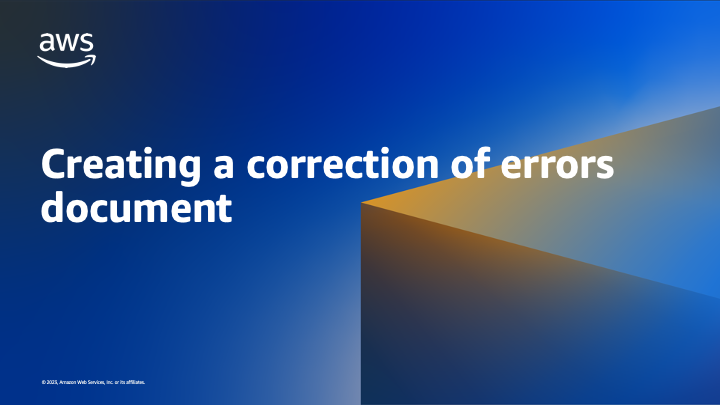AWS Cloud Operations Blog
Tag: Cloud Operations
Accelerating Blue/Green Deployments with AWS MGN Post-Launch Actions
Customers are becoming more aware of the benefits of migrating to AWS in a world increasingly pivoting towards cloud adoption. A recent whitepaper by IDC found that customers who migrate to AWS can experience a 51% reduction in the cost of operations, a 62% increase in IT staff productivity, and a 94% reduction in downtime. […]
Expand the depth of Well-Architected Reviews with the new Lens Catalog Feature
The AWS Well-Architected Tool (WA Tool) helps you define and review workloads based on the latest AWS architectural best practices. This allows you to consistently identify areas of strength and improvement in your workloads. During a Well-Architected review, you answer questions to evaluate your architecture and receive an improvement plan detailing any high or medium […]
Disaster Recovery (DR) Failover to the Disconnected Edge
Introduction Many enterprises rely on AWS to host the entirety of their infrastructure due to the inherent advantages of cloud computing. However, some enterprises operate mission critical workloads from remote areas at an increased risk to lose external network connectivity. For instance, a research facility located in a remote desert, an oil rig in international […]
Know Before You Go – AWS re:Invent 2023 | AWS Management Console
New this year, the AWS Customer Experience team has tips to help you enhance your re:Invent experience and learn about various improvements that make AWS even easier to use. Meet us at our kiosks in the AWS Village and be sure to check out the sessions below. Our sessions will cover best practices for managing […]
Build a Cloud Automation Practice for Operational Excellence: Best Practices from AWS Managed Services
Introduction In today’s fast-paced business environment, organizations are actively pursuing operational excellence to maintain a competitive edge. Automation is a critical foundation for achieving better efficiency, reliability, and scalability in operations. However, integrating automation into cloud practice entails more than simply implementing software or tools. Building a cloud automation practice requires a transformative journey that […]
Creating a correction of errors document
This blog post will walk you through an example of creating a Correction of Errors (COE) document. At Amazon, operational excellence is in our DNA. One best practice that we have learned at Amazon is to have a standard mechanism for post-incident analysis. The COE process facilitates learning from an event to avoid reoccurrences in […]
Self-service Account Provisioning Using AWS Service Management Connector for ServiceNow
Many customers are looking to adopt a multi-account strategy within their AWS environment. This allows customers to isolate their workloads into different environments including test, dev, and production in addition to separating workloads based on regulatory requirements. As customers scale their multi-account environments, one strategy to increase agility is to offer business units their own […]
Using AWS AppConfig to Manage Multi-Tenant SaaS Configurations
As a Software as a Service (SaaS) provider, you can benefit from a SaaS operating model in a number of ways. One of the most impactful benefits you can realize is improvements to your operational efficiency, and one of the fundamental techniques you can leverage is to maintain a single software version for all your […]
Automate insights for your EC2 fleets across AWS accounts and regions
Introduction Gaining insights and managing large Amazon Elastic Compute Cloud (Amazon EC2) fleet that is spread across multiple accounts and regions can be a challenging task. It’s crucial to have a quick and efficient method to identify which instances are managed by AWS Systems Manager (SSM) and gather detailed information about the instances that are […]
Centralize AWS Cost Anomaly Detection using Amazon Managed Grafana
AWS Cost Anomaly Detection uses advanced Machine Learning to identify anomalous spend and root causes, empowering the customers to take action quickly. Currently, in order to view the AWS Cost Anomalies in AWS Cost Explorer, it requires the user to have IAM user access privileges on the AWS Management Console. The ability to centrally monitor and […]









